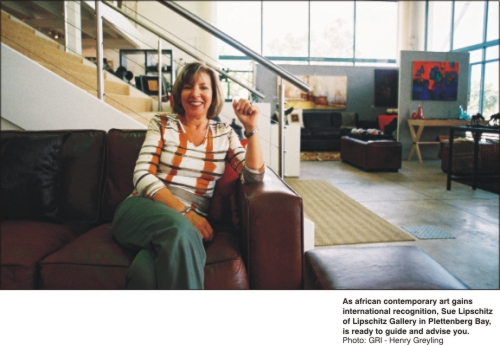|
News
2002

Summer

Autumn

Winter

Spring

2003
|
 |
|
 |
2004 - Autumn

African contemporary art gaining recognition of international art world
We talk about the art world, the global art market and the international nature of contemporary art, but the art most of us see most of the time comes from a small 'universe', the European art traditions. And this is only one good reason to welcome the news that “Africa, a continent long overlooked as a source of contemporary art, has burst onto the international art world's radar screen”. So confirms Barbara Pollack, writing in the US art magazine, Artnews. She confirms the exceptional interest in contemporary art from South Africa, art which has benefited from the liberated atmosphere of post-apartheid South Africa and the fact that, in the past few years, artists from this continent, but especially South Africa, have been receiving high profile exposure in museums, galleries and biennials.

Recent lists of contemporary investment artists worth collecting include Kentridge, Bester, Mthethwa, Nglengethwa and Scott, all artists whose work is currently available from Lipschitz Gallery in Plettenberg Bay.
Sue Lipschitz, who curated international exhibitions and was the advisor to Dr Franklin Sonn, former Ambassador to the United States on new acquisitions for the South African Embassy in Washington, says that it's important to know what you're buying. This means that you have to spend time educating yourself about the artist. Too often we hear people say art is an investment.
The first investment is to invest your time before you invest your money. Not everyone has 'time to invest his time' and that's where you should try to get professional advice. Cultivate a relationship with a gallerist or art consultant. By developing a relationship over time, the gallerist knows what fits into your collection. Then, when they obtain specific works, its natural that he or she will get in touch with the collector.
Gallerists are important in that they can brief you on what the market is doing. Lipschitz says 'we have access to information that many collectors do not have. We know if the work is fresh or if its 'been around the block;' also what comparable works are available. We try to encourage the client to go beyond the market and buy something that is a great work of art. And to let you know when you have the opportunity to buy a great piece by an artist whose real potential is not yet recognized in the market.
|
|

